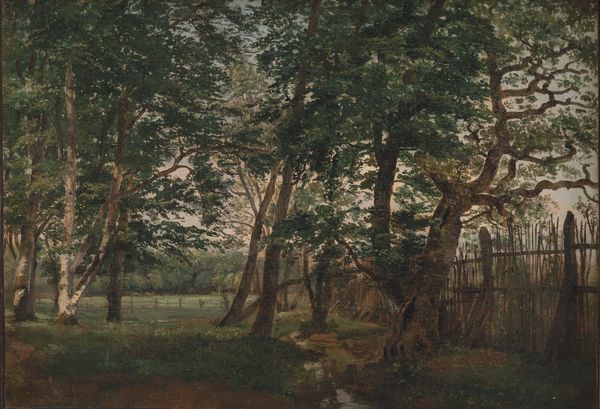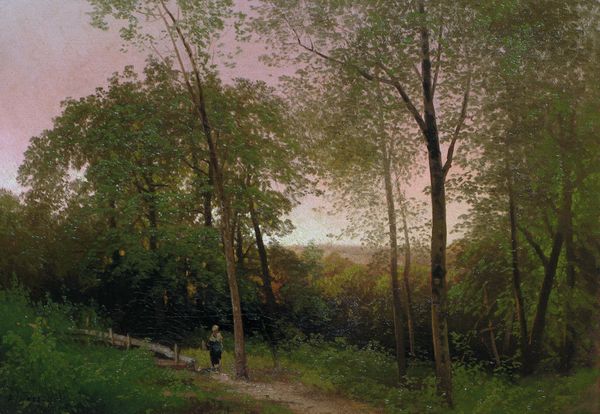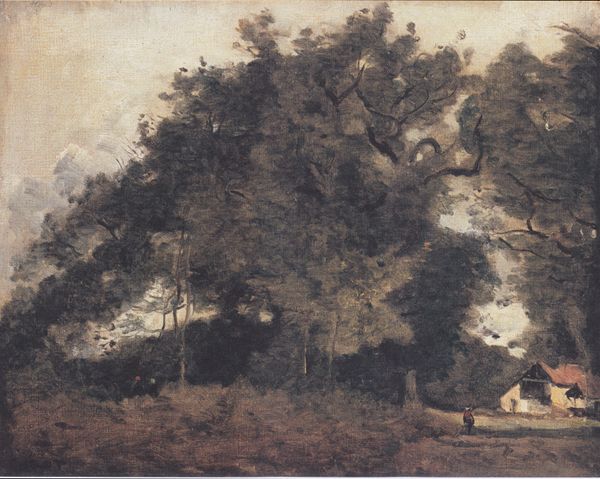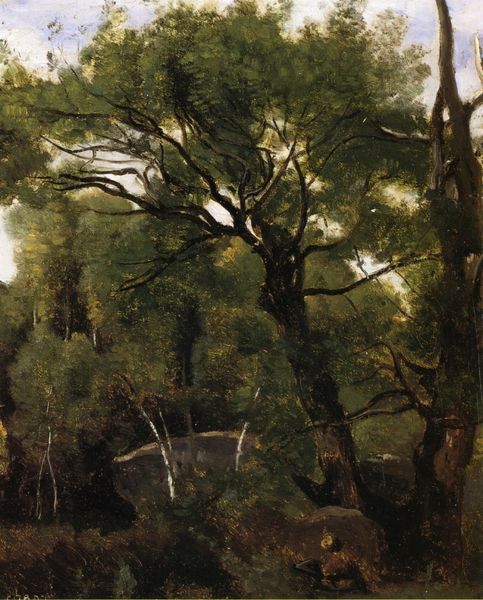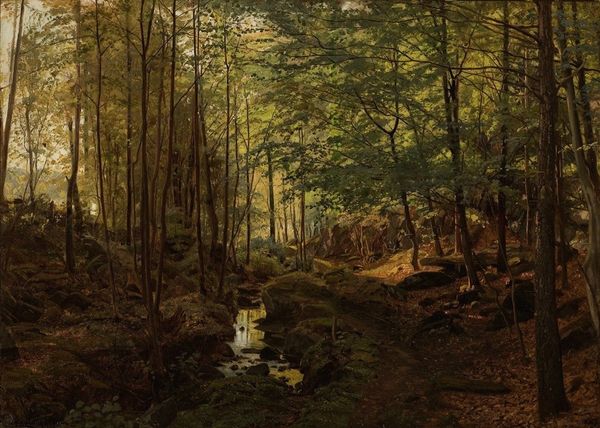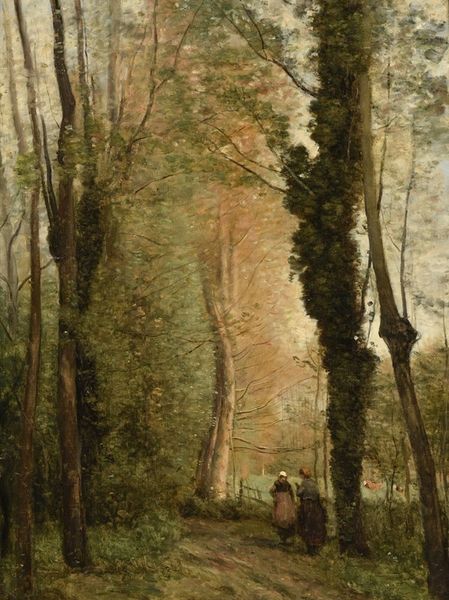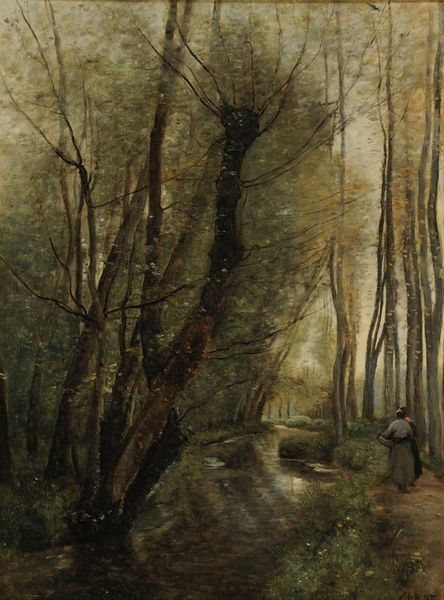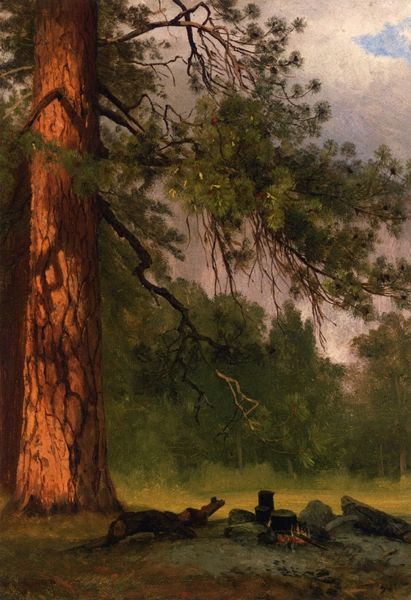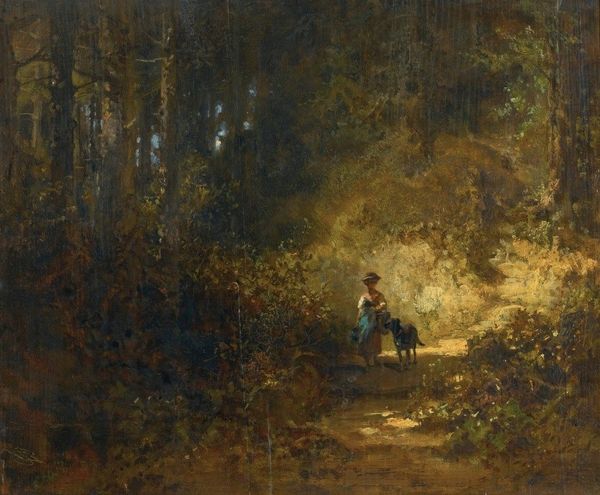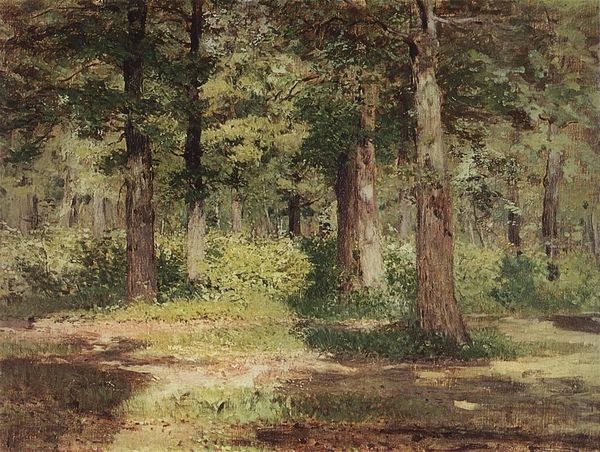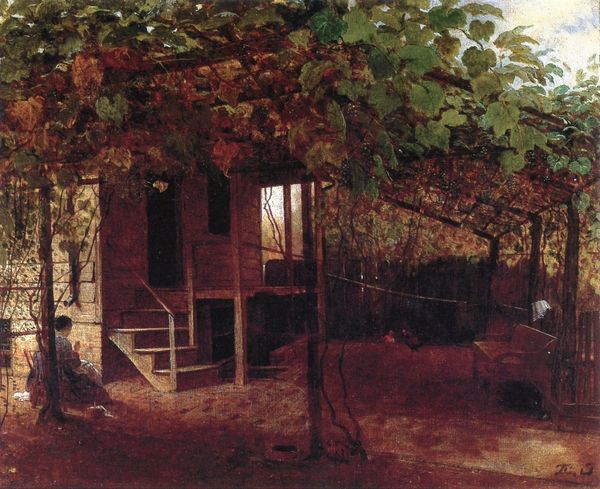
painting, plein-air, oil-paint
#
painting
#
impressionism
#
impressionist painting style
#
plein-air
#
oil-paint
#
incomplete sketchy
#
landscape
#
genre-painting
Copyright: Public Domain: Artvee
Curator: Ah, Camille Corot's "The Banks of the Seine at Conflans," painted sometime between 1865 and 1870. It’s really lovely, isn't it? Editor: It has an air of tranquility. All the figures in the composition appear deeply absorbed in their own worlds, like captured in moments of reflection. What exactly were they reflecting on? And, what is reflected to them by the nature around them? Curator: Well, Corot was known for these kinds of dreamy, atmospheric landscapes. Think about how society saw the landscape at the time. For him, I imagine it was more about capturing a feeling, an emotional response to nature. That soft light filtering through the trees… it’s pure poetry. I can almost hear the water trickling and smell the earthy goodness! Editor: Certainly. But Corot was also a product of his time. His art wasn’t made in a vacuum. This painting hints at emerging tensions, perhaps class differences reflected in leisure, because in an era of industrial revolution, access to leisure became more complicated. This tranquil riverbank…who really had time for this? The figures almost seem deliberately anonymized to create this pastoral scene. Curator: Hmmm. Fair enough. The composition definitely keeps them at a remove, almost swallowed by the landscape. Yet it feels so personal to me, like a stolen glance. But tell me more about how you read those social dynamics here. Editor: Well, there's something potent about how Corot juxtaposes figures in relation to the land and buildings. This invites you to consider labor, privilege, and access. And of course gender. Where are the women here, apart from this idyllic home near by? And, thinking through art history and visuality: how this ideal landscape aesthetic played into contemporary theories of colonialism, capitalism and modern modes of extraction? The relationship that European modernists forged with both landscapes and the “rest” of the world were both premised on deeply exclusionary and violent acts. Curator: So you’re saying it's both beautiful and deeply implicated? It makes me question what that initial "lovely" I said, means, you know? But then isn't that true of so much art we love? Thanks for complicating my viewing experience; now I need a long walk to the Seine and maybe a strong drink to process. Editor: (chuckles) Exactly! And thank you for considering a different way to view this idyllic work. Perhaps Corot’s painting calls us to question not only leisure, but its complicated histories and visual depictions that so greatly shape the modern psyche.
Comments
No comments
Be the first to comment and join the conversation on the ultimate creative platform.

